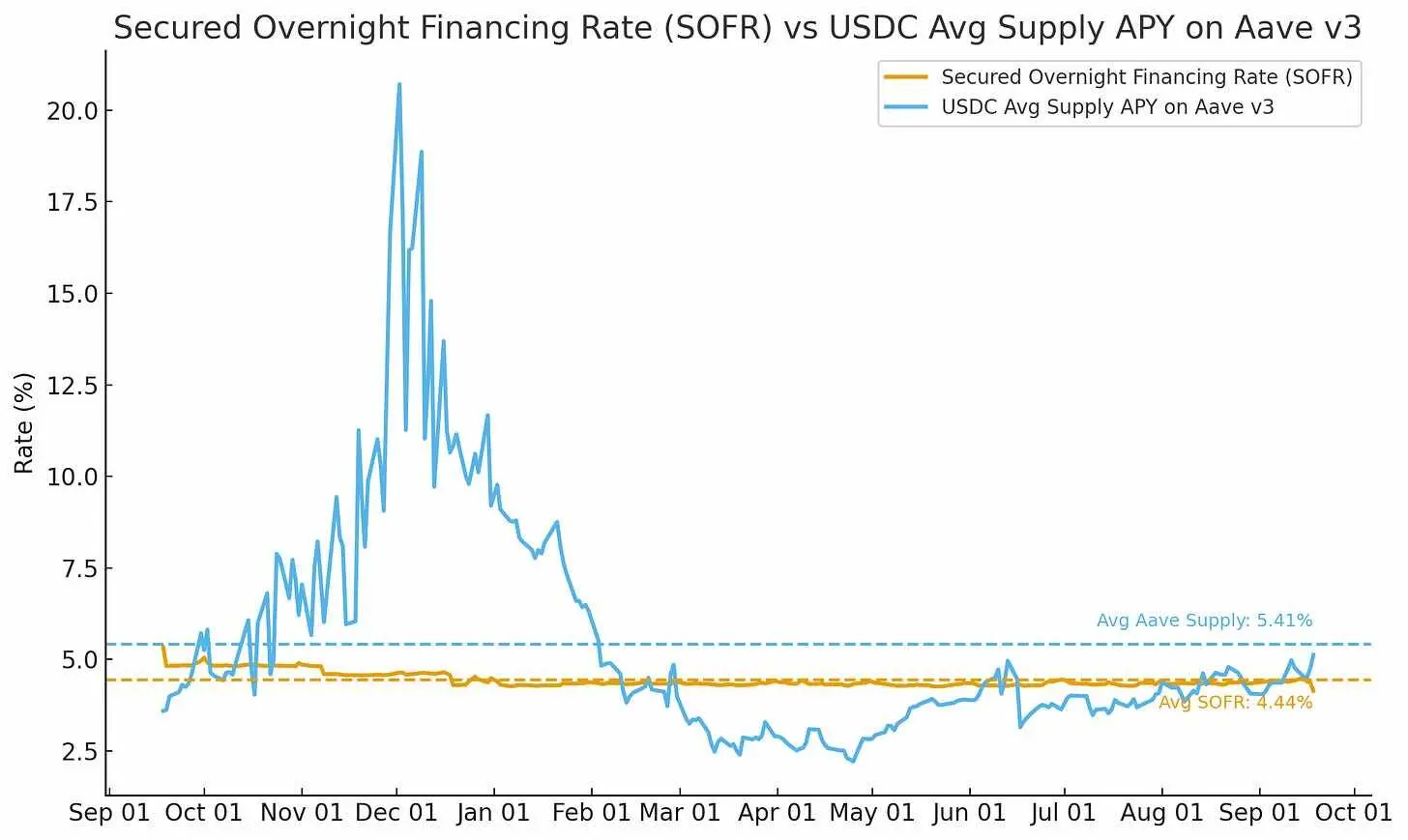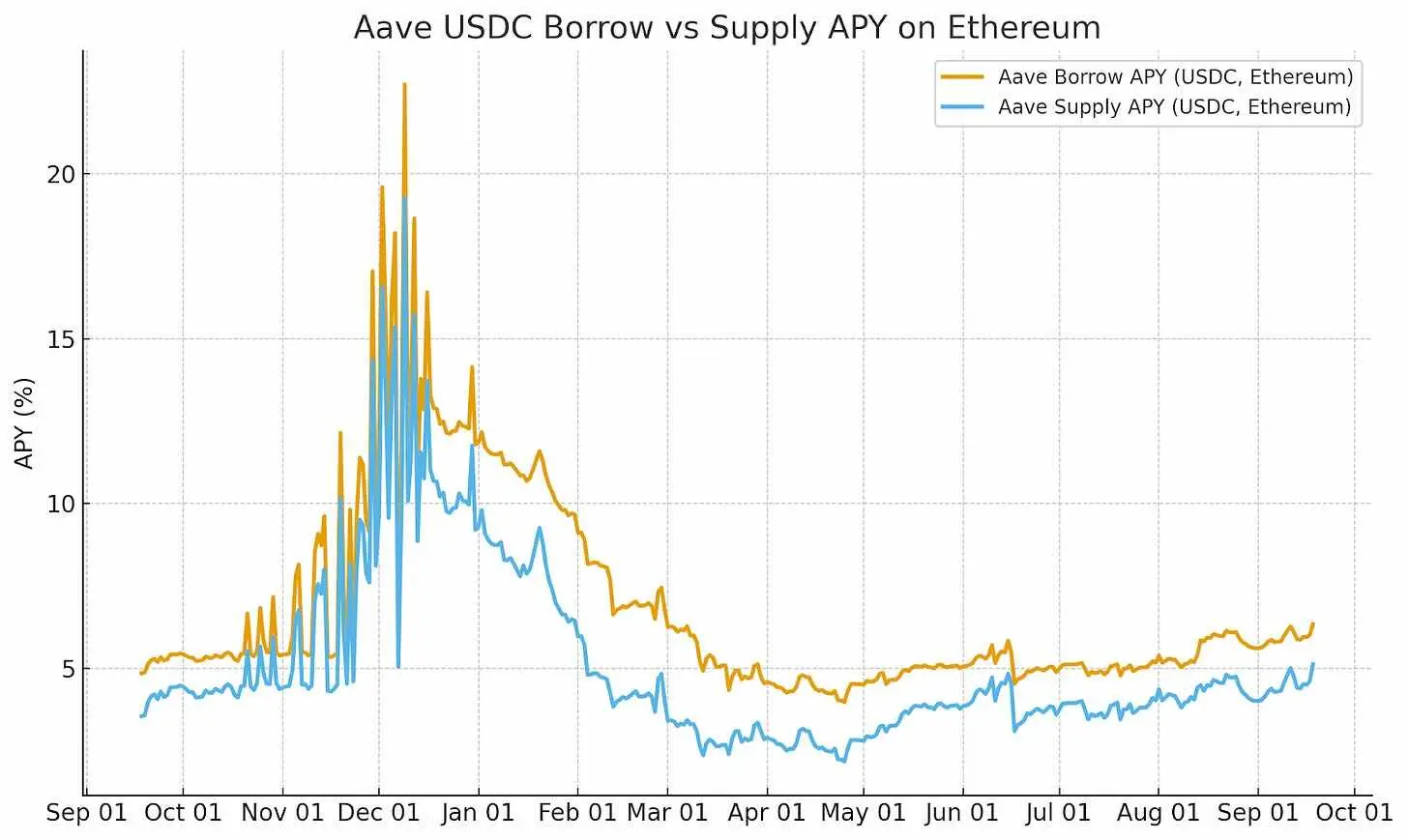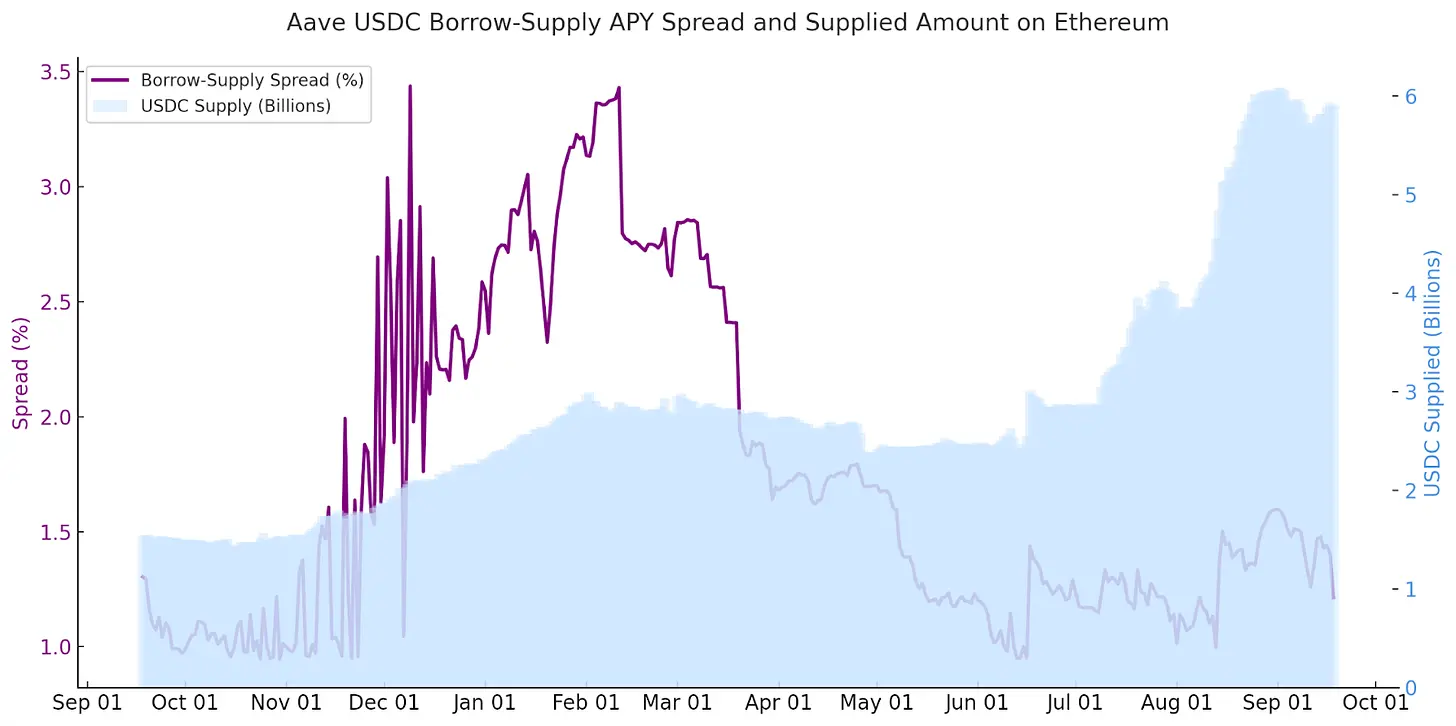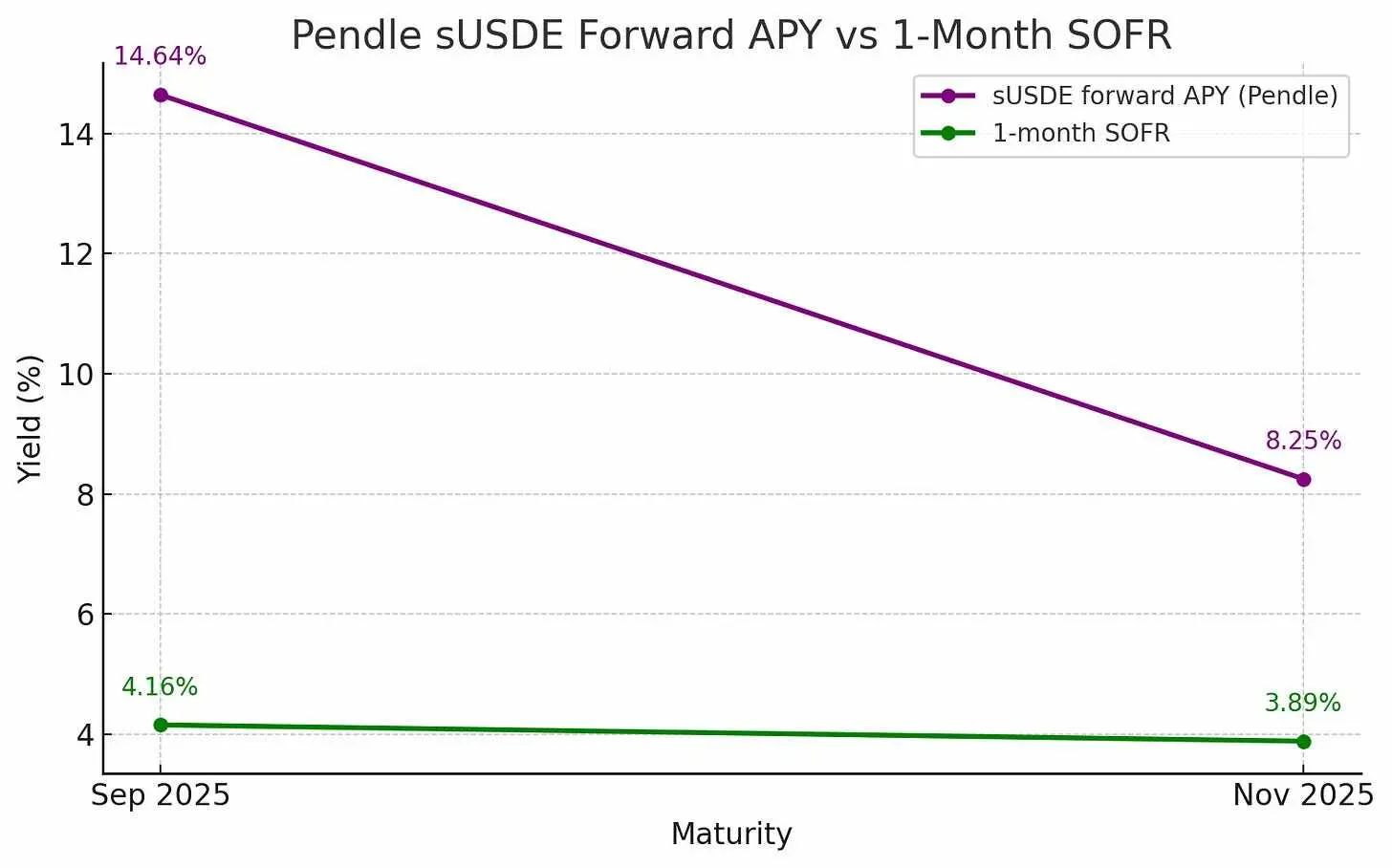What is the impact of the Fed's interest rate cut on on-chain lending?
Original author: Ethan Chan & Hannah ZhangThe
Original compilation: Shenchao TechFlow
Federal Reserve cut interest rates this week and hinted at further easing in the future. The headlines of almost all mainstream crypto news are sending the same message:
lower cost of capital → increased liquidity → crypto bullishness.
But the reality is more complicated. The market has already priced in expectations of interest rate cuts, and there has been no immediate surge in the inflow of funds into BTC and ETH.
Therefore, let's not stop at the surface level, but look at how a small interest rate cut affects a part of DeFi - lending.
On-chain lending markets like Aave and Morpho dynamically price risk rather than relying on regulatory directives. However, the Fed's policy provides an important reference for this context.
When the Fed cuts interest rates, there are two opposing forces at play:
1) Reverse effect: Fed interest rates fall → on-chain yields rise as people seek uncorrelated assets
Capital may flow into DeFi as it looks for yield beyond traditional Treasuries and money market funds, driving up utilization and driving up on-chain interest rates. If we compare USDC's supply APY with SOFR (Guaranteed Overnight Financing Rate) on Aave, we can see that this trend is gradually emerging before the Fed cuts interest rates in September.

Source: Allium
We also see this happening as DeFi lending-supply yield differentials fall.
Taking Aave's USDC lending on Ethereum as an example, the borrowing-supply yield spread gradually narrowed a few days before the Fed's interest rate cut announcement. This is mainly due to more money chasing yields, supporting the short-term reverse effect.


Source: Allium
2) Directly correlated: Fed interest rates fall → on-chain yields also fall as alternative sources of liquidity become cheaper
As risk-free rates fall, so does the cost of alternative sources of liquidity such as cryptocurrencies. Borrowers can refinance or leverage at a lower cost, driving down borrowing rates both on-chain and off-chain. This dynamic usually persists in the medium to long term.
We will see signs of this in forward yield market data.
Pendle is a forward yield marketplace for DeFi, where traders can lock in or speculate on future DeFi annual percentage rates (APYs). While Pendle's maturity date doesn't exactly match the traditional benchmark rate, its maturity date is very close to SOFR, allowing for valuable comparisons – for example, in late September and late November.
On these dates, the 1-month SOFR rate is around 4.2% (September) and 3.9% (November). Pendle's implied sUSDe yield for similar maturities is much higher in absolute terms (14.6% and 8.3%, respectively). But the yield curve shape says it all. Like SOFR, Pendle's forward yields are also moving lower as expectations of further Fed easing are priced in.

Source: Allium
Key Points: Pendle's movement is in line with the direction of the traditional interest rate market, but with a higher benchmark. Traders expect on-chain yields to decline as macro policy changes.
Conclusion: The impact of the Fed's interest rate cut on the crypto market is not as simple as the title suggests
. Rate cuts also have various effects – declining on-chain yields, narrowing interest rate spreads, and changes in the forward yield curve – which ultimately shape liquidity conditions.
In addition to lending, we can further understand the impact of the Fed's rate cuts on the crypto market, such as how the circulation of stablecoins will change as issuer yields decline or real yields increase ETH staking inflows.
By combining real on-chain data, we can go beyond the news headlines and truly see how macro policies penetrate the crypto market.
